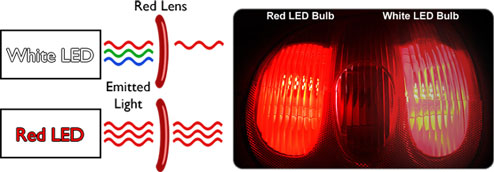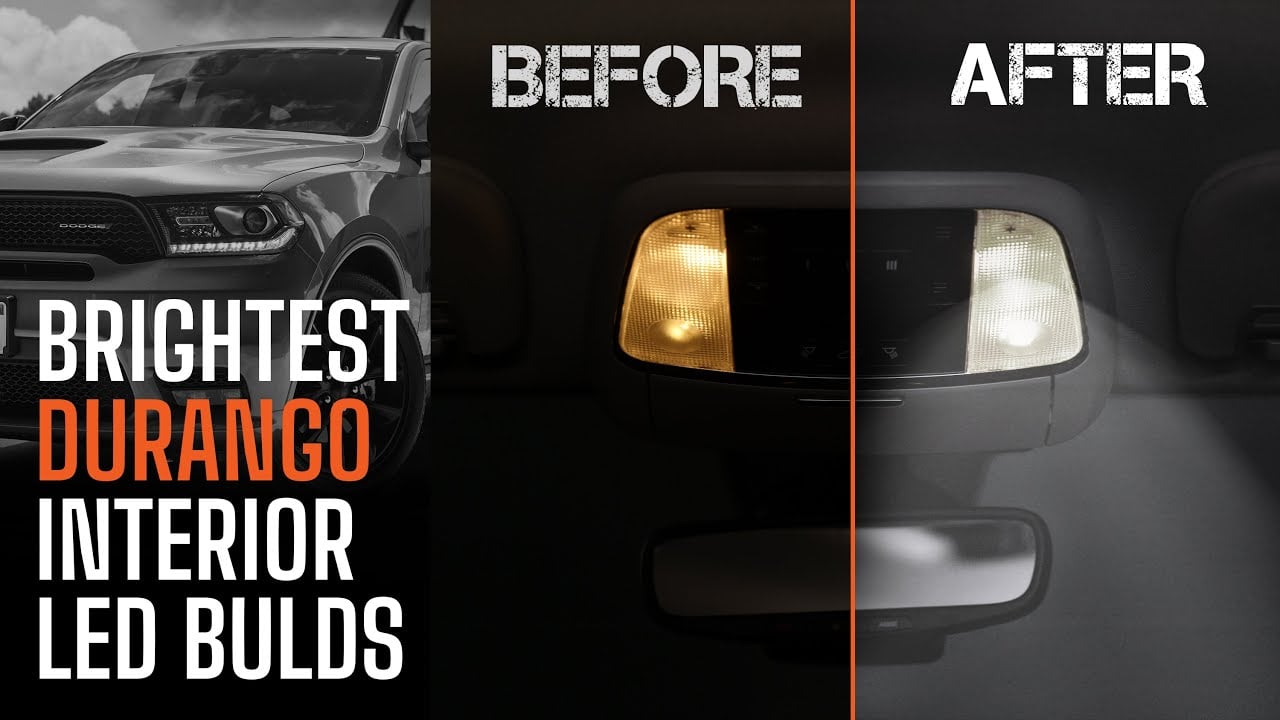
LED Bulb replacements come in many styles, shapes and colors – it’s important to get the right ones!
LEDs have revolutionized automotive lighting with their versatility and longevity. However, with a plethora of options available, choosing the right LED bulb replacement for your vehicle can be a daunting task. This guide aims to simplify that process.
The Color Match Principle
When selecting an LED bulb, especially for signal functions, it's crucial to match the LED color to the lens color. Here's why:
Red Lens
A red lens filters out all colors except red. If you use a white LED behind a red lens, most of the light gets filtered out, making it ineffective. However, a red LED behind a red lens will shine brightly, as the lens won't block its light.
Clear Lens
If your vehicle has clear lenses, choose LEDs based on their function. For instance, use red LEDs for brake lights and amber LEDs for turn signals.
This infographic illustrates the process by which LED bulbs emit light using a red lens.
Brightness Concerns with LED Car Bulbs
While LEDs offer numerous benefits over traditional filament bulbs, such as longer lifespan, instant illumination, reduced power consumption, and vibrant colors, they often lag in one department: brightness.
- Standard LEDs: Typically, these aren't as luminous as their incandescent counterparts. However, some high-end LEDs, packed with numerous LED chips, can rival or even surpass the brightness of filament bulbs.
- GTR Lighting TW6 LEDs: These are exceptions in the LED world. They match or even outshine most standard filament car bulbs. However, their light distribution varies, making them appear brighter in some fixtures and dimmer in others. This variability is influenced by the design of the bulb housing and reflector.
- Light Emission Pattern: Traditional filament bulbs emit light uniformly in all directions, much like a glowing orb. In contrast, most LEDs emit light directionally, similar to how a flashlight works. This directional emission can make LEDs seem less bright in fixtures designed for filament bulbs.
Conclusion
When transitioning to LED lighting for your vehicle, it's essential to consider both color and brightness. Ensure the LED color complements the lens color and evaluate the brightness based on your vehicle's specific fixtures. With the right

